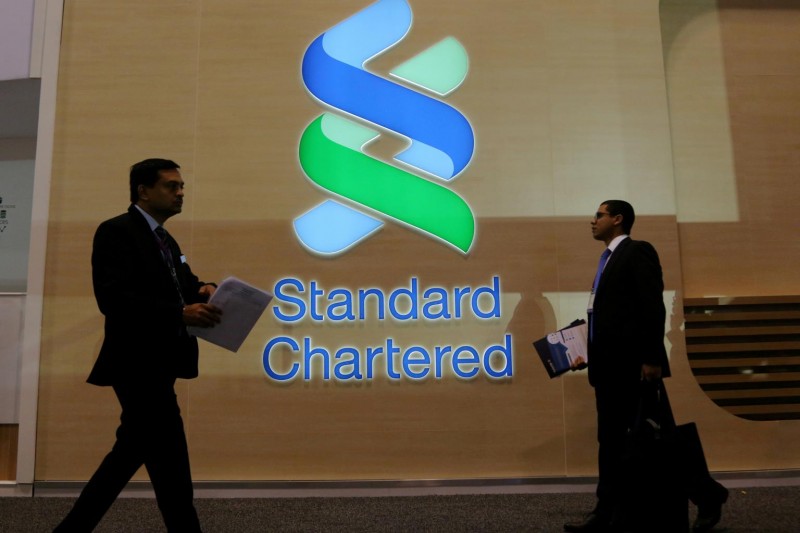
Image credit: Business Time
STANDARD Chartered Bank Malaysia Bhd (StanChart), the country’s first and oldest bank, sees its biggest opportunities in affluent and personal banking as the nation moves into the Covid-19 endemic stage.
The bank’s plan is to grow those businesses by leveraging on technology and sustainability, according to Sammeer, its head of consumer, private and business banking (CPBB).
“For Malaysia, our ambition is to double our client base by 2025, across both affluent and personal banking,” Sammeer, who goes by a single name, tells The Edge in an interview.
The target comes amid a brighter outlook for Malaysia, he says, with economic growth projected at 5.8% this year after growing just 3.1% last year and an expected rebound in domestic demand even as borders reopened on April 1.
Sammeer, who took on the CPBB role last October, is essentially in charge of StanChart’s retail banking business, from which the bank derives a little more than half of its income.
“One of the biggest [growth] drivers for us would be the affluent segment. Given that we are an international bank, the affluent have significant advantages with us. We offer solutions and advisory to clients onshore that, in the past, were only available to clients in more mature markets like Singapore and Hong Kong,” he says.
One such example is StanChart’s real-time foreign exchange conversion platform, launched in Malaysia last year, which enables clients to capture market opportunities. The bank will continue to invest in such capabilities, he says.
As for personal banking, Sammeer says the plan is to scale up the business via partnerships.
“The approach we’re taking is simple — we want to be where the clients are. And today, most clients can be found on platforms such as e-commerce platforms and social media platforms. So, the idea is for us to drive the adoption of finance or help clients manage their financial products through these platforms, by partnering with [the platforms],” he explains.
“The concept is to bring the bank to the client [via these platforms], and this is an area that we’re investing on heavily as we speak.”
Indeed, last October, Standard Chartered plc invested in, and entered into, a 10-year partnership with Singapore-based Atome Financial. The latter operates Asia’s largest buy-now-pay-later (BNPL) platform, Atome, and Indonesian digital lending platform Kredit Pintar.
The partnership will initially involve BNPL services that would be rolled out in Indonesia, Malaysia, Singapore and Vietnam, and later expand to include digital lending products. Standard Chartered, in which Singapore state investor Temasek Holdings Pte Ltd is the largest shareholder with close to a 17% stake, said it plans to provide US$500 million in financing.
Sammeer says, apart from partnerships, StanChart will continue with its own efforts of digitising the bank.
“Today, almost 70% of our servicing for our personal banking clients happens digitally. So, most transactions that you can think of doing, including opening an account and placing a term deposit, you can do it digitally through our SC Mobile app, and we’re expanding on that. The ambition or the end-state for us is to take it to 100% [or] at least to 90%, 95% levels, [taking into account] those clients who are not really comfortable using [digital] platforms and who may still want to walk into a branch,” he says.
Interestingly, StanChart’s digital banking strategy for Malaysia is different than the one employed in Singapore and Hong Kong. In those two markets, the global banking group set up separate digital-only banks — namely Trust Bank and Mox Bank respectively — with partners. In Malaysia, it will scale up its own digital business via partnerships.
“One strategy is to do what was done in Hong Kong and Singapore, but in most other markets like Malaysia, Indonesia and India, we are going with the partnership model. So, Atome was one example [of a partnership], but within this area itself, you will potentially see more announcements [from us] for Malaysia,” Sammeer says.
Reversing losses
After two profitable quarters last year, StanChart slipped into a net loss of RM67.03 million in the third quarter ended Sept 30, 2021, on higher operating expenses and lower net income. It has yet to release its final-quarter results.
On a nine-month basis, however, it made a net profit of RM128.6 million, which was about 60% higher than that in the same period a year earlier. The improvement came on the back of significantly lower allowances for expected credit loss. In FY2020, the year Covid-19 hit, StanChart reported a net loss of RM61.56 million.
Is the worst over for the bank? “From a retail banking standpoint, the asset quality is looking better,” says Sammeer, who is unable to comment on the bank’s corporate banking business.
He points out that the gross impaired loan ratio for retail and business banking stood at about 2% as at 3Q2021, down by about 10% year on year. (Business banking refers to the lender’s small-and-medium-sized enterprise, or SME, business).
Additionally, most of the bank’s customers who were on targeted repayment assistance (TRA) programmes have now come off it. “Almost 94% to 95% of the book is off TRA now, so the repayments are looking better,” he remarks.
He expects loans under his domain to grow in a “high single-digit” this year compared with a low single-digit last year. The SME business looks more promising now with the economy having opened up, he points out.
Mortgages, which account for the bulk of the bank’s lending, have grown 12% y-o-y in the first quarter this year while SME loans have grown 36% y-o-y. “We are seeing the momentum strengthening further [for both],” Sammeer states.
StanChart, which set up its first branch in 1875 on Beach Street in Penang, has over 8,000 employees today.
Source: https://www.theedgemarkets.com/article/stanchart-looks-affluent-and-personal-banking-growth

